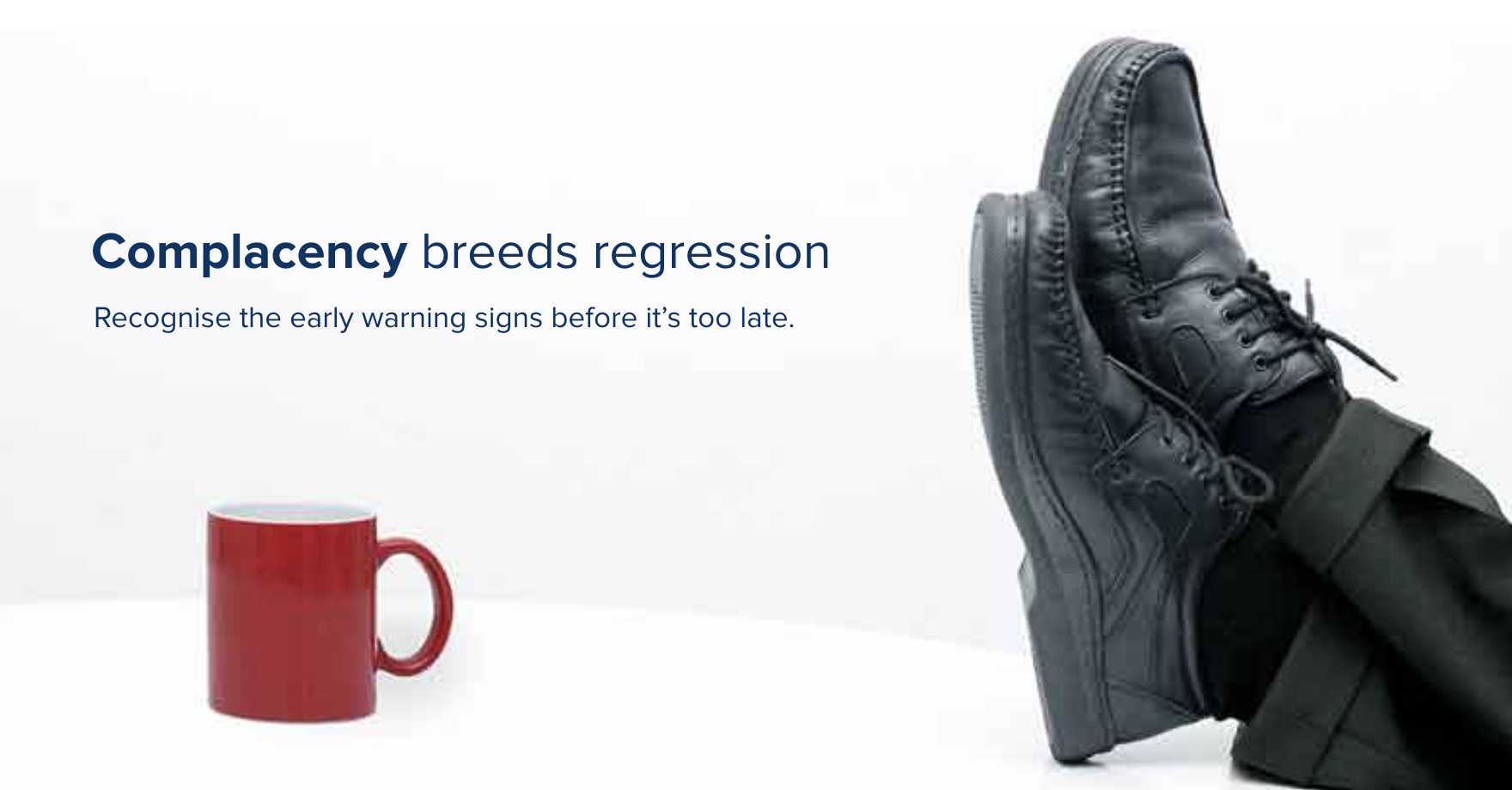by Dr. Phillip Palmer.
Estimated reading time: 5 - 7 minutes.

Complacency can be a real problem in dentistry.
Any profession that can be so obsessive about minute details as ours does, cannot afford to take its eye off the ball, ever. Many, if not most, practices have problems at some stages with the business side of our practices. Then, after a lot of hard work, we fix up the problem areas.
But then… how often does it come back in the future?
How many times do we take our eye off the ball with our numbers, our soft skills, our hiring efforts, and become complacent?
Economists call this cycle “regression to the mean” and it all starts by being complacent.
Regression to the mean describes the classic case of a business progressing splendidly, until suddenly its performance reverts to a mediocre level.
To illustrate this phenomenon, let me share two examples...
I am a keen golfer. My handicap was, for many years, sitting at the 14-15 mark. I decided to take lessons and overtime; my handicap went down to single figures (which was a very large improvement). Being satisfied with my desired outcome, I then decided to stop practicing and my lessons altogether. A couple of years later, my handicap quickly slid back to the mark it was at beforehand.
Another example is how I fervently weed my garden until it is pristine. Then when I get a bit bored, and stop weeding, the weeds come back.
Virtually every practice has experienced this process. Good months follow poor months, poor years follow good years. What is this process? And why does it operate so continuously and pervasively?
The factors pulling an exceptional dental practice back to its average are always at work: The dentist, the staff, the economy, third-party programs, and rigid attitudes of the people we contact can all, in some way, can undermine our achievements and cause the practice to regress.
Let`s look at some of these powerful forces..
We become bored.
We take seminars to train the staff, improve customer service, communicate better to offer optimum dentistry, and update clinical skills; trying new things and the resulting improvements they bring to the practice are exciting. But after a while, the progress tapers off. We plateau and then regress. Training is seen as a chore. Reviewing practice KPIs becomes dull.
Complacency sets in, and we stop doing the things that made us successful because they became boring.
We relapse into old habits.
After making successful inroads, we ease up and often lapse into old habits and lose ground.
A principal dentist I know well once raised her production per hour through careful appointment scheduling. She organised morning huddles where the staff pinpointed openings in the schedule and formed strategies for filling them. This diligence paid off: production per hour increased, and the cash flow to the practice correspondingly rose.
As the office improved, however, the urgency disappeared. The dentist discontinued the morning huddles. The staff, in turn, paid less attention to openings in the schedule, and hourly production soon dropped.
We get complacent and forget the things that made us successful.
We stop inspecting the numbers.
Being complacent about the details can frequently result in a regression to the mean.
These details include our goals for: production per hour, collection percentage, case acceptance rate, number of cancellations or no-shows, and, most importantly, active maintenance percentages. After we set our expectations in each critical practice area, we need to inspect the performance - the details.
When our leadership skills are weak, we fail to inspect what we expect, and consequently fail to spot the early warning signs.
We fail to emphasise on being patient-centric.
Being patient centric, of course, is critical to any successful dental practice. Patients invest in dental care based on their relationship with the dentist and staff. In my decades of consulting, I have found that this is one of the most difficult concepts for our profession to grasp. When a dentist encounters an objection to a treatment plan, more than 90 percent try to counter the objection by giving more technical details.
There is a great misunderstanding in the profession about what truly being patient-centric is. It goes beyond the comfy pillows (which are wonderful) to reaching the patient`s heart. Patients reject treatment not because they fail to understand it, but because they do not feel the practice has their best interests at heart.
So, with all that said - must we be proactive for the rest of our careers?
The answer is yes! A business moves forward only by direct intervention from its leader(s).
Practices that avert complacency and sustain their success are those who continually seek new ways to improve, new growth opportunities for themselves and the staff, and new ways to make the job fun.
These practice owners and principal dentists look forward to monitoring the practice statistics, reinforcing the management systems, and maintaining the staff`s performance standards. They recognise the early warning signs of trouble and correct them. They continuously focus on perfecting and shaping their patient experience.
They know that they cannot put the practice on cruise control. They continually take the time to weed their practice!
Complacency can be the most dangerous threat to any business – and dental practices are no exception.

